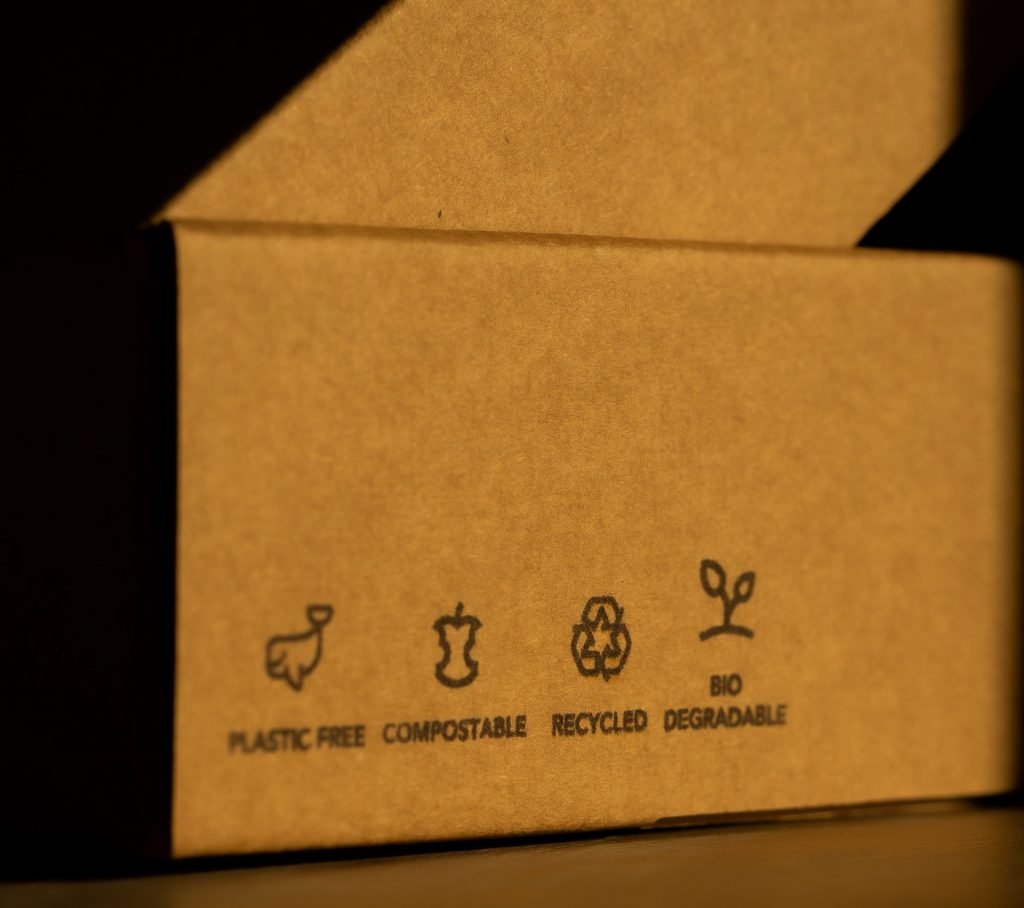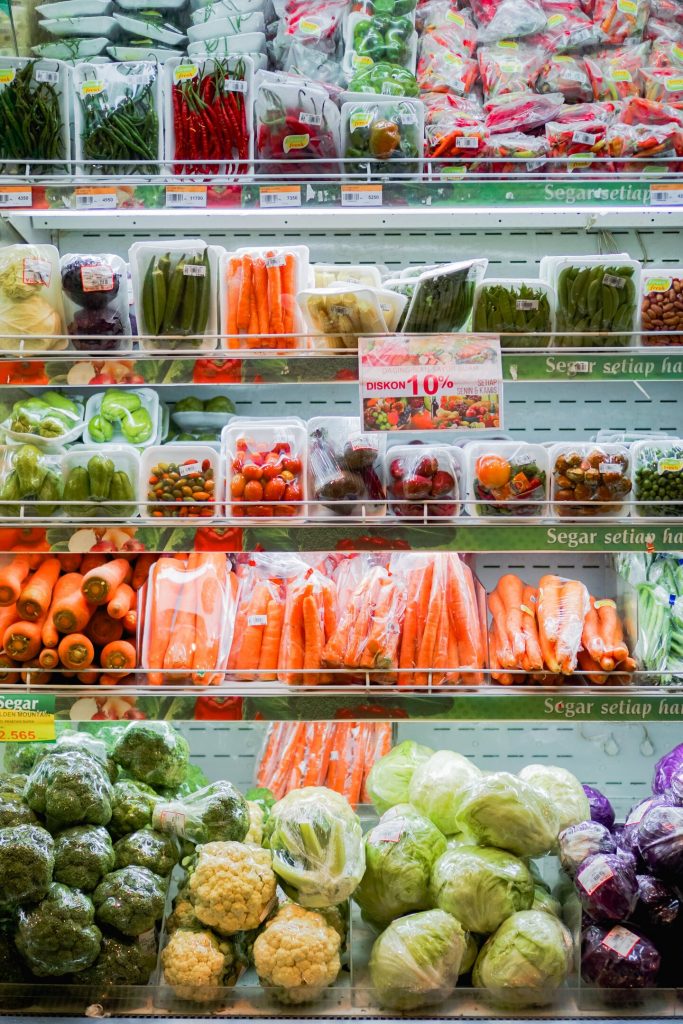Calculating the climate footprint of packaging
From time to time, we get questions about our emission factors for packaging material. Sometimes they differ from the emission factors found elsewhere, for methodological reasons. In this article, we will describe our methodology for calculating the climate footprint of packaging. But first we will look at a few specific things that sometimes are done differently.
There are a few things, when calculating the climate footprint of packaging, that can be approached in different ways. The most common factors, as well as the factors with the largest impact on the result, relate to:
- Carbon uptake into the material
- Carbon release from the material
- The method for allocating emissions between by-products
1. Biogenic carbon uptake into the material
All plants (trees and crops) that grow sequester carbon from the atmosphere. Carbon from CO2 combines with hydrogen from water (H2O) and form hydrocarbons (sugars, fibers, etc). This is the well-known process of photosynthesis. Depending on which plant it is, this can become food for us, fodder, building material, or packaging material. When the hydrocarbons get digested, decomposed, or incinerated, the same amount of carbon gets released back into the atmosphere, almost always as carbon dioxide (and the remaining instances, as methane CH4). We know that this happens with all food and packaging material, sooner or later. Decomposition or incineration may take months to years for packaging material, but this timescale is insignificant with regards to humanity solving the climate crisis.
For this reason, most other LCA approaches as well as CarbonCloud’s exclude the sequestration of biogenic carbon – or include both the sequestration and release of carbon which has the same result. However, there is a handful of packaging companies producing material from biomass, who choose to credit their products with this carbon sequestration – and it makes business sense since it gives a more favorable result. Strictly speaking, the approach that carbon has been removed from the atmosphere during the time from when the biomass started to grow to when the packaging left the factory is not faulty. However, this way of counting is not supported by major standards for carbon footprinting such as ISO 14067. The standards are very clear: biogenic carbon in products is reported separately and shall not be included in the footprint.
Newsletter to-go?
Our special today is our Newsletter, including snackable tips, hearty climate knowledge, and digestible industry news delivered to your inbox
2. Carbon release from the material
Some packaging material includes carbon that does not have a biogenic origin, e.g. fossil-based plastics. This is the same as the previous case: We know that all carbon in the material will get released into the atmosphere, and almost always as carbon dioxide. There is no logical reason why carbon stored in the products should be treated differently depending on its fossil or biogenic origin. Therefore, we use the same principle for both. We assume that all carbon stored in the material eventually reaches the atmosphere, and we include these emissions in the footprint. Bio-based and fossil-based packaging material is thereby treated consistently. The only difference is that, for a bio-based material, these emissions are canceled out by the carbon sequestration from when the biomass is grown.
Nevertheless, it is not uncommon that the carbon stored in fossil-based plastics is completely ignored by other LCA practitioners. “Our study is ‘cradle-to-gate’ and that’s that.” What happens to the carbon after the packaging material leaves the factory is not considered.
It is the primary user of the plastic who is responsible for extracting the carbon from the ground, and that is why we allocate the corresponding CO2 emissions to virgin plastics. For recycled plastics, we only include the emissions from the recycling process itself in the footprint. This means that carbon is not double-counted. (In reality, only a very small fraction of all plastics is recycled.)
3. Allocating emissions between by-products
By-products can sometimes inspire the strangest pieces of intellectual gymnastics by LCA practitioners. Let’s look at a specific example. Bioplastics from sugarcane, produced in Brazil.
Brazil has a heterogenous electricity supply system, with lots of renewable generation and lots of coal-based power. In the production of the bio-based plastics, sugarcane is grown, which is used to produce ethanol, which is then turned into plastics. To power this process, bagasse is used, a by-product of the sugarcane. The bagasse gets burnt, providing heat for the process, and excess heat is used to run generators for electricity generation. Some of the electricity is used in the plant and some of it gets sold to the grid.
Now to the trick: the producer assumes that for every kWh of electricity they feed to the grid, there is correspondingly 1 kWh of coal-based power not generated. With a functioning power market, this may well be true. But -and this is important- if the plastics are to take the entire carbon credit for this change in Brazilian power production, then no one else can do the same, or else we would be double-counting the benefit. This is truly unlikely to happen.
In an extreme case, if we were to produce thousands of times more of their plastics and we produce enough by-product electricity to replace all fossil powered electricity generation in Brazil, then the authorities would still need to report the electricity as being e.g. 60% fossil-based, since all the climate credits of the shift have been exported with the plastics. It makes little sense for anyone viewing the Brazilian electricity that it would be entirely renewable at this point.
The CarbonCloud way
CarbonCloud uses a methodology that allocates emissions in accordance with the structures of responsibility at play. We use consistent book-keeping that avoids both double double-counting, and emissions getting lost along the way. This ensures that products on our platform can be compared in a fair way.
Let’s end with a deep-dive – an excerpt from our technical report, describing how we approach it in detail:
Packaging
For packaging we consider extraction/production of raw material, converting operations and the transport chain. We assume that all carbon stored in the packaging material (biogenic or fossil) eventually reaches the atmosphere, and we include these emissions in the climate footprint. For biogenic carbon, the emissions cancel out the carbon uptake from the atmosphere when the raw material is grown. Delay of these emissions is not taken into consideration. Apart from this, no other activity related to end-of-life treatment is considered. The scope is thereby consistently applied to both the food product and its packaging.
For recycling we use the “simple cut-off” approach, which allocates the whole environmental burden of material production to the primary user of the material. Recycled material bear only the impacts of the recycling process itself. The logic here is to be consistent with our philosophy of using economic allocation whenever possible. Consumers are seldom compensated economically for leaving their used packages at the recycling station. In this sense, used packages have no market value. This means that we assume that only primary use of packaging material drives production.
Allocation
When a process generates more than one product, the climate impact from the process needs to be allocated between the products. Allocation (instead of system expansion) is part of the traditional attributional approach to life cycle assessment. As a general principle we apply economic allocation. This means that the climate impact from a process is allocated between the products in proportion to their economic value.
Related Posts
The great debunking of climate myths: Packaging
Have you ever walked through a grocery store aisle and caught yourself raging or raving? Why does this single cucumber need a plastic wrap?Why package two portions in one package of chicken?Juice in a




